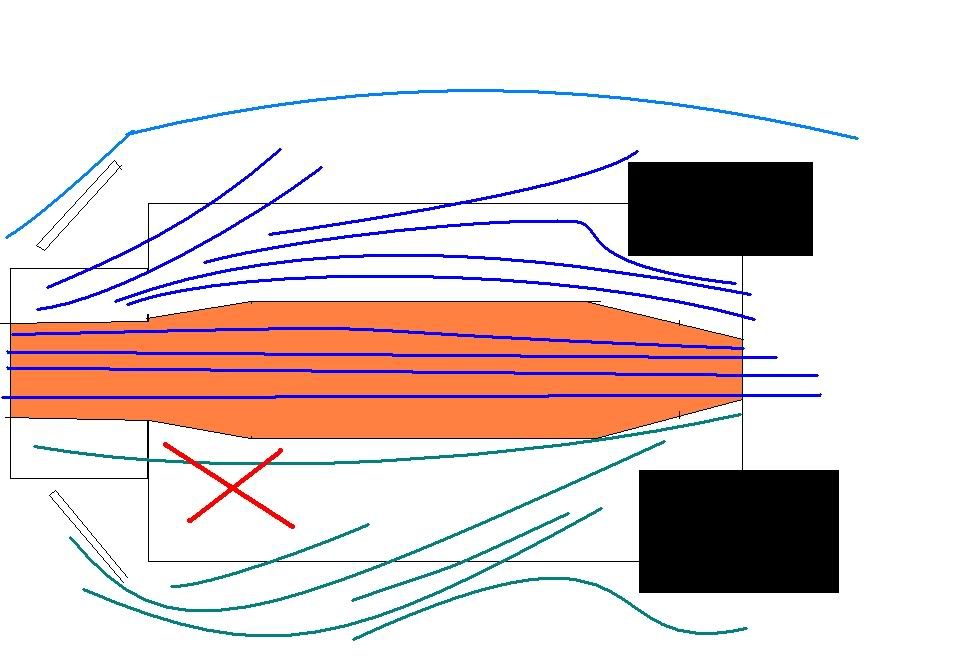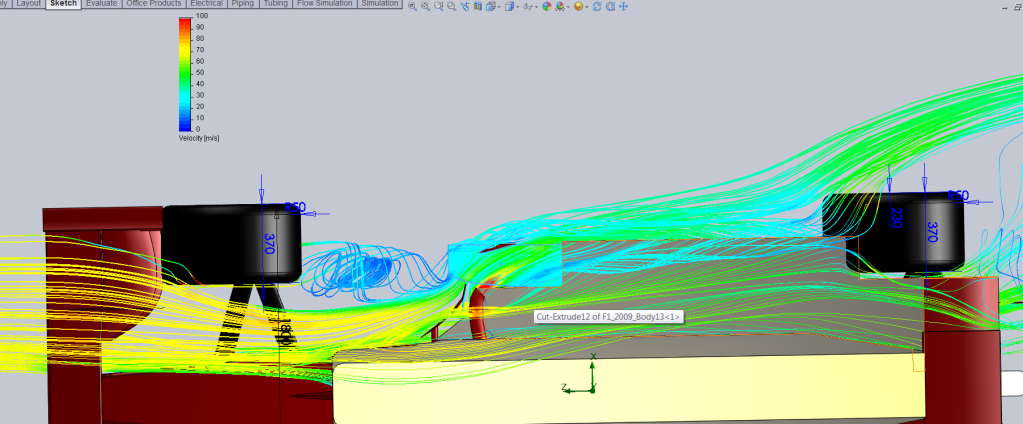Yeah, less air as possible is good as long as the velocity is very high, so there is a balance. Chances are there is a limit to how low a mass flow you can push without creating eddys.hardingfv32 wrote:Ringo
1) "When air is fed under the car, it is really just to prevent stagnation and circulation from occurring."
What is meant by "circulation from occurring." What type of circulation and where exactly?
I shouldn't have said circulation, as that will create confusion. It's more eddy formation. I have't looked in a fluids book in a while so i am rusty on the subject.
You don't want to inject air under the side pods. If the pressure is not lower than under the flow then forget about it. If the floor pressure is say 90 kpA, injecting 101 kPa air under the car will just raise the average presure under there.2) May I assume that there would never be a reason to inject flow under the side-pods because of their distance from the ground? There is no chance of accumulation or stagnation?
Any injection should be behind the diffuser throat, or ahead of the splitter where the pressures are higher than the under floor.
Sucking away from the floor is better than pumping in towards the floor.
Even back in the day, there was never a blown diffuser with the exhuasts under the floor. All were ahead of the diffuser.
The fan cars sucked away, they never pumped towards.






